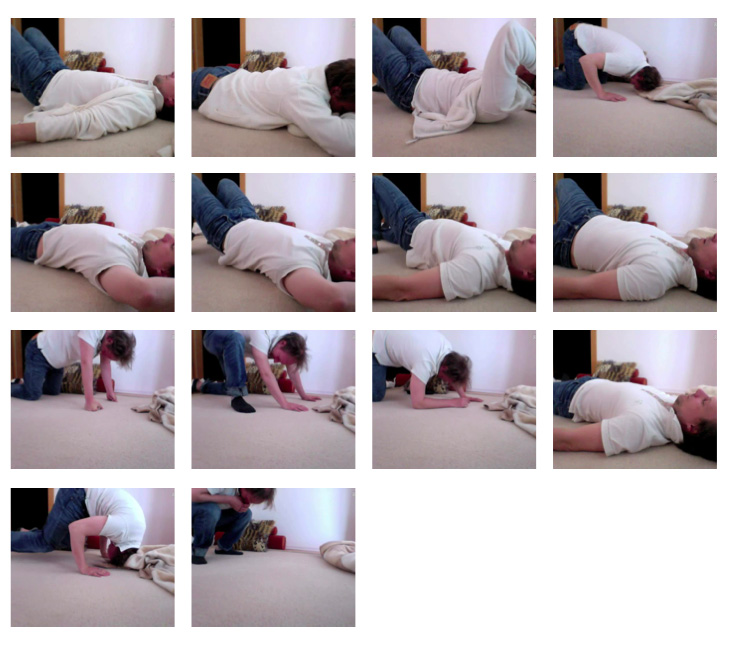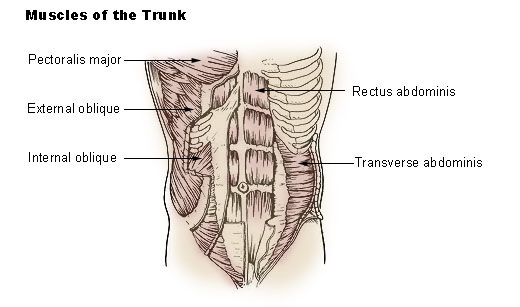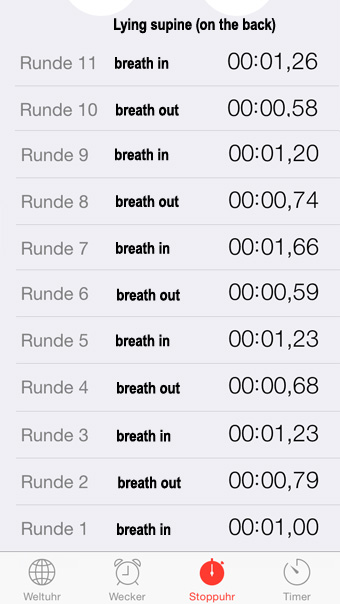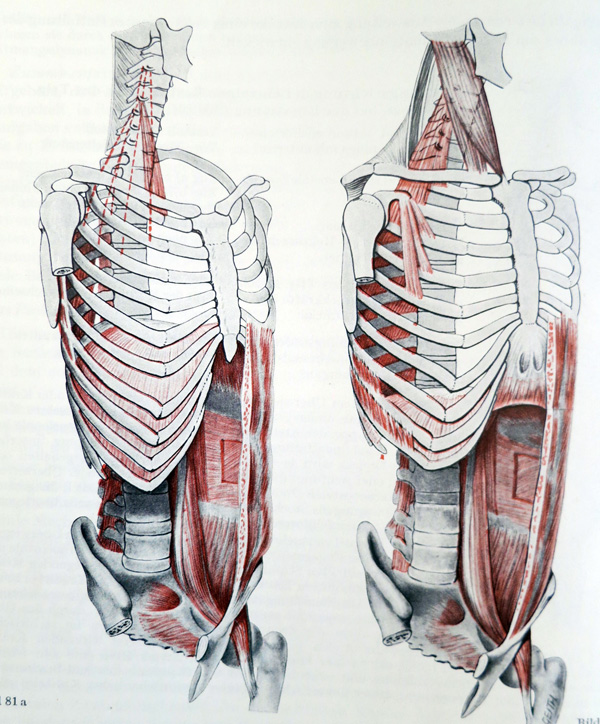Source
- Alexander Yanai Volume 1
- Reel 1, Track 3, Lesson 2 (This reference is identical to the reference of AY006 in the IFF edition)
- Duration 38 min.
- For German see AYnmal täglich: Den Bauch beim Ausatmen einziehen
- AS: correction: 2/3/2 in Hebrew
Synopsis
- Contracting the abdomen while exhaling, in various orientations towards gravity (on all fours, prone, supine, supine with pelvis lifted, prone with sidelying etc)
- A breathing lesson, to do with decoupling the abdominal action from the breathing function. There is one single breath action throughout, to suck the belly in whilst exhaling. In lying, prone, with crown on floor, in a wonky all-fours position, standing.
Lesson Outline
References: Looking down, looking up (base of neck changes). Length of breath cycle. Distance of lumbar from floor.
- Supine, feet standing, exhale and pull the abdomen in “Till you can feel the space below your ribs becoming empty”.
- 1a. Lie on the stomach, do the same. Notice when the stomach leaves the floor and you feel the ribs press the floor. Is there a left right difference in contact?
- 1b. Turn and reduce the contact of the left chest with the floor. Do the same breathing. The left side now needs to breathe more in order for you to feel floor contact
- 1c. Do the same on the other side: reduce the contact of the right chest. Now return to the middle and breathe thus. Can you feel the small floating ribs creating the accommodation for breath?
- Supine, feet standing. Lift the head with the hands and simultaneously exhale in this way
- Are the abdominals that help lift the head the same that help exhale?
- If you lift the head too much, the belly won’t go in. The head then lowers
- Stand on the knees, crown on the floor, elbows in the air
- Is the exhalation shorter, when inverted?
- Exhale in this way
- Does the head roll and the neck lengthen?
- Supine, legs long. Breathe in this way. Compare length of exh. and inh.
- 4a. Lie the arms long above the head, legs long, breathe this way. What happens to the arms? Where do you feel it in the back? Exhale, wait, exhale more. Do you feel a pull as far as the legs?
- 4b. Supine arms above head, feet standing. Lift the pelvis, breathe in this way. Does anything happen in the arms? Do the collar bones and chest expand? “This position forces that he higher parts of the body work harder than usual. In turn, this makes your usual breathing easier.”
- 4c. Right leg straight, left foot standing, lift left pelvis, breathe like this. Change legs around. Rest, sense if the chest is flatter than usual
- Stand on all fours, hang the head and pull the abdomen in whilst exhaling. The part that is highest from the floor is 10cm above the belt line. Note the head lowers and rounds as you breathe
- 5a. Stand the right foot, place the right forearm on the floor. Breathe like this. Do you feel asymmetry in the back, in the breathing?
- Change sides
- Supine, breathe this way while lifting the chest (off the floor)
- 7a. Stand on the knees, crown and hands on the floor, breathe this way. Feel the body rolls over the top of the head
- 7b. Stand the toes, continue till you can lift the knees. Move not powerfully, not fast, not too much
- 7c. Continue, bring the back of the neck (towards the idea of being) in contact with the floor. Rest. Feel what is happening in your body now
- Stand, hands on knees, knees gently bent, lower the body (bottom) with arms staying straight. Contract the abdomen and exhale, hold the breath at the end, then contract the abdomen even more. Then inhale. Repeat about 10 times
- Stand, sense
Insights and Focus of Teaching
- At the start of the lesson, Moshe says:
- “Words, by themselves, do not mean anything. A word derives meaning from the context or sentence hat contains it. A word by itself is not bad or good. All words are good, only how or when they are used varies. The same is true of movement. All movements are good. All ways of breathing are good provided they fit the needs of a person’s body and aren’t compulsive habits. Always having !o breathe a certain way is not breathing; it is compulsion. A healthy body breathes differently in each situation. You breathe differently using an Australian crawl than when swimming with a butterfly stroke. You breathe differently standing on your head than when you lie on your back. You breathe differently sleeping than when you lift heavy weights. It is necessary in each situation that your whole mechanism of breathing – your ribs, sternum, clavicles, shoulder blades, stomach, diaphragm, and muscles of your chest – organize so you can do the activity under optimum conditions for breathing.
- Your chest has six sides like any box- a front, a back, a right side, a left side, a cover at the top, and a base at the bottom. The volume decreases when you lift the base. If you separate the two sides more than you lift the bottom, the volume becomes bigger. That implies that you don’t need to disrupt your breathing if you change the sides as you wish. The final result will either be an increase or decrease in the volume of your lungs according to the needs of a situation. You can produce the change with either your chest, ribs, abdomen, clavicles, or diaphragm. All can influence the movement of breathing.”
- Instead of seeing this lesson as a breathing lesson, we can view it as a way to study and investigate into how breathing is done (a quote I found in a recording of New Dwelle 2006 / Munich City training)
- Dr. Prof. Stuart McGill identified the Rectus Abdominis as the important muscle for spine stabilization (on the front side). He says that there is no scientific evidence to be found whatsoever that the Transverse Abdominis is a stabilizer to the spine (lower back). Even though some fitness professionals claim it to be so – there seems to be no study supporting this claim.
- Differentiation between Obliques, Transverse Abdominis, and Rectus Abdominis
- To realize which of the abs muscles are needed for breathing, and which for lifting the head
Related ATMs
- See Pelvis Clock Theme
- Minimal Lifting AY29
- See Breathing Theme
- Tag See-saw-breathing
- Tag Abdominal-muscles
- Tag Lengthening the back
- Tag Softening-chest
On knees and head:
- Amherst 2 – Week 2 – 06/16/81 PM2 Rolling Head on All Fours / Rock Head on Floor
- Amherst 2 – Week 9 – 08/05/81 AM1 Prone, Stand on Knees; Circle Crossover (continued)
- MM08 The Seventh Cervical
- Rotterdam 1976 – Tape 7 – See Saw Breathing
- SF2 – Week 10 – 19 August 1976: Rocking on the Top of the Head
- SF3 – Day 07/B – 22 June 1977 – On hands and knees, and on forearms and knees, tilting pelvis
- SF3 – Day 26 – 27 July 1977: Prone, tilting pelvis, relationship of breath and movement to back and ribs. Continues into kneeling on all fours.
Lengthening the neck:
Resources
-
- Epiglottis on wikipedia: http://en.wikipedia.org/wiki/Epiglottis
- Mp3s in german language: Alfons Grabher
- Video of a fitness professional demonstrating the Stomach Vacuum
- A free version of Larry Goldfarb teaching this lesson can be found on Mind in Motion. You need an account to access the lesson. Once you have an account, go to your “Library” and search “Free ATMs” and then “Alexander Yanai”
- Ruth Knill’s video
- Fast forward Feldenkrais lessons AY21 Contracting the abdomen while exhaling by Alfons Grabher
More Insights (ideas, principles, strategies, experiences, …
- Youtube comments from Marincxr: He is inhaling with a closed glottis which causes the diaphragm to contract and suck in the abdominal cavity. The transversus abdominus are mucles used for expiration during exercise. The diaphragm is the main muscle (There are other muscles that contribute like intercostals , scalene and sternocleidomastoid) used in the process of inspiration or breathing in and if done with a closed glottis causes this effect. The transverse abdominus is used in forced expiration not inspiration. The transversus abdominus is used exclusively in forced expiration so how is he training it while doing a vacuum.
- I took a stop watch to my breathing:
- Dr. Ludwig Schmitt, the great German doctor and author of the book “Atemheilkunst” identified 18 groups of muscles that have to play together in breathing (the pelvic floor being just one of them).
– AlfonsGrabher Dec 3, 2014
- Repeatedly flattening the belly whilst exhaling, in different positions including in semi headstand. try this lesson for its effect on the. The action is a lot to do with pulling the belly in. Therefore, the lesson focuses on the muscular aspects of the exhalation. But, why use the abdomen to exhale, actively, in contrast to passive exhalation due to diaphragmatic relaxation? Cf with breathing by welding, where the focus is on molding, or directing the air in to, the chest and skeleton. Cf with AY28, where the body is taken into an asymmetric position, and see saw breathing happens, in other words, has to do with position, rather than, or in addition to action. Other breathing lessons have to do with frequency, cadence, nose, etc., i.e. the breath itself, rather than the neuro-muscular-skeletal habits or possibilities of movement. (B. Parsons)
Disclaimer: This site is for sharing information about Feldenkrais® Awareness Through Movement® lessons. The information included on this site is for educational purposes only. Nothing on Feldy Notebook should be construed as an attempt to offer medical advice or treatment. All contributions to this website are licensed under the Creative Commons Attribution Share-Alike 3.0 License. Do not add any copyrighted information to this website. Feldy Notebook is sponsored by Kinetic Inquiry.



